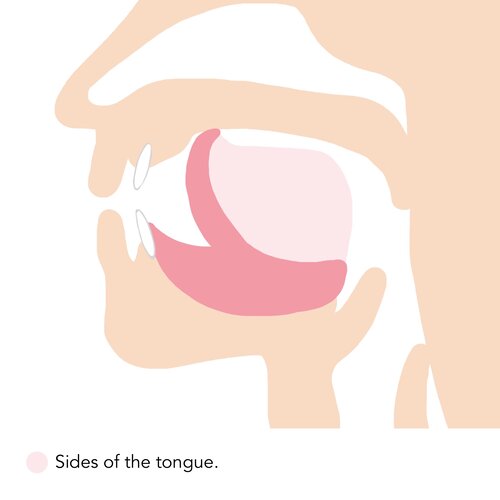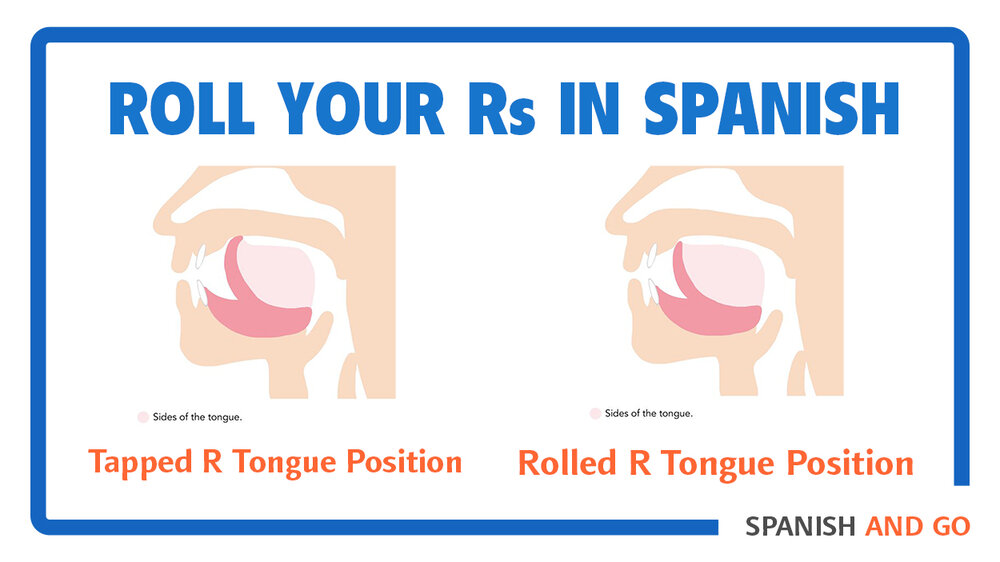How to Roll Your Rs in Spanish
Are you an English speaker struggling to master the alveolar trill and roll your Rs in Spanish? Don’t worry, you’re not alone. Many native English speakers find it challenging to vibrate their tongues in the right way to produce the rolling R sound. However, with a bit of practice and the right techniques, you too can master this tricky sound. In this post, we’ll show you how to relax your tongue, position it correctly against the roof of your mouth, and vibrate your alveolar trill like a native Spanish speaker.
Having a foreign accent when speaking Spanish is nothing to be ashamed of. Often it gives a certain prestige to the speaker.
Still, we have to be aware that there are some occasions in which the entire meaning of a message can get lost if a single sound is mispronounced. As one of the most problematic sounds for Spanish students is the R sound, we decided to write a short guide to help you master how to roll and tap your Rs in Spanish.
The Two Different R Sounds
The letter R in Spanish can represent two different sounds. We have the tapped R and the trilled R. Let’s start off by identifying each of them.
How to Roll Your Rs – Tapped R Example

How to Roll Your Rs – Trilled R Example

Here is a list of Spanish words whose meaning depends on how the R is pronounced: the first word is pronounced with a tapped R and the second word is pronounced with a trilled R. Once you have distinguished these two sounds, we can move on to learn how to produce them.
When it comes to pronunciation, the most important thing is to be aware of the organs that are involved. In the particular case of the R sounds, the tongue is key. Let’s see, step by step, what happens inside our mouths.
How to Pronounce the Tapped (Soft) R
- The tongue is cupped: the sides are raised and the center is slightly depressed.
- The tip of the tongue is rolled up and back: it is the underside of the tip of the tongue that touches the palate, just behind the alveolar ridge.*
- The vocal cords must sound: put one of your hands on your throat and make sure you feel a vibration.
- We will get the tapped sound by unrolling our tongue: the underside of the tip of the tongue taps the alveolar ridge, landing behind the bottom front teeth.
* The alveolar ridge is that wrinkled bump behind the top front teeth.
Here is a tongue twister to practice the tapped R:
camarón, caramelo, caramelo, camarón, camarón, caramelo, caramelo, camarón…

How to Pronounce the Trilled R
- The tongue is cupped: the sides are raised and the center is slightly depressed.
- The tip of the tongue is rolled up and back: this time the underneath side of the tip of the tongue is touching the alveolar ridge.
- The vocal cords must sound: put one of your hands on your throat and make sure you feel a vibration.
- We will get the trilled sound by blowing air between the tongue and the alveolar ridge.
Think of it as a lip trill (imagine the emphatic “brrrrrr!” sound you hear when someone is cold): you don’t have control over the movement of the lips, but you can make sure that you blow the right amount of air and that you keep your lips relaxed enough so that they can trill. It’s the exact same thing with our tongue: it has to be loose!
The air you blow and the position of your tongue will do most of the work. Don’t forcefully move your tongue.
Tip: Put your tongue in the position of an English D, and then curl the tip of the tongue back.
Now practice both Rs with this other tongue twister:
erre con erre cigarro, erre con erre barril, rápido ruedan las ruedas cargadas de azúcar del ferrocarril.
You can practice even more Spanish tongue twisters here.
Is Rolling Your Rs Genetic?
Some students argue that they are physically unable to pronounce the Spanish R because of their genetics. But unless you have a tongue-tie, a cleft palate, or another physical anomaly, you can do it. There’s nothing physically stopping you. It’s a matter of practice, so be patient and don’t stop trying.
An interesting anecdote regarding whether rolling your R is genetic comes from Puerto Rico. A popular belief about that the reason why some Puerto Ricans (particularly in the southern and western coasts of the island) pronounce the rolled R sound like a Spanish J sound is because of something called frenillo. This is the frenum or part that connects the tongue to the floor of your mouth. The theory is that a large percentage of people on the island in these areas have a tongue-tie and therefore have created a work-around for the R sound. However, this hypothesis has no evidence and seems to rely on the belief that tongue-ties are genetic.
While there is some evidence to suggest that tongue-ties may be genetic, they only affect 4-11% of newborn babies, and it is easily diagnosed and treated.
Physical Capability of Rolling Rs by Approximate Population

This chart represents the approximate percentage of the worlds population that are physically capable of rolling their Rs. Meaning group A can already roll their Rs or has the physically capacity to produce the trilled R sound, while group B has a physical impediment preventing the production of the trilled R sound.
How to Know Which Sound to Pronounce (Tapped or Trilled R)
When to Use the Tapped R
- At the end of a word or syllable:
- hogar (home)
- ayer (yesterday)
- vivir (to live)
- flor (flower)
- albur (chance)
- After a consonant, except L, N, or S:
- broma (joke)
- Madrid
- gracias (thanks)
- problema (problem)
- trabajo (work)
- With a single R in-between vowels:
- avaro (miserly)
- mesera (waitress)
- Perú
- puro (cigar)
- tarea (homework)
- Before a consonant:
- árbol (tree)
- barco (ship)
- marfil (ivory)
- Argentina
- hermano (brother)
When to Use the Trilled R
- At the beginning of a word:
- raza (breed)
- remo (paddle)
- risa (laugh)
- roto (broken)
- rubio (blond)
- After L, N, or S:
- alrededor (around)
- desrielar (to derail)
- enriquecer (enrich)
- sonrisa (smile)
- Israel
- With a double R in-between vowels:
- aburrido (boring)
- arriba (upstairs)
- cerrado (closed)
- torre (tower)
- tierra (soil)
Do You Have to Roll Your R in Spanish?
This may come as a surprise, but it is not a necessity to roll your R if you just want to be understood. Even some native speakers cannot do it. The main real problem is that Spanish has two R sounds, and this can change the meaning of a word. However, through context, most people can figure out what you mean to say.
It’s worth mentioning that Costa Ricans do not roll their Rs as most other Spanish speaking countries do. They pronounce it as an approximant consonant like we do in English. And they get by just fine!
Listen to our Tica friend Carlota talk about how Costa Ricans pronounce the R and her example of the famous “Erre con Erre” Spanish tongue twister in episode 42 of the Learn Spanish and Go Podcast. We talk about this subject at around the 30:17 mark.
So, while it’s a practical skill, not rolling your Rs doesn’t mean the end of your Spanish journey.
Keep Practicing
Learning to produce new sounds is not an easy task. Be dedicated and patient. In the end, no matter how serious you are about learning Spanish, it shouldn’t keep you from enjoying the process. As Jim and May say, “el camino es el destino.”


Related Posts
How to Go Shopping in Spanish
5 Tips to Achieve Spanish Fluency You Can Start Using TODAY
How to Ask for Directions in Spanish